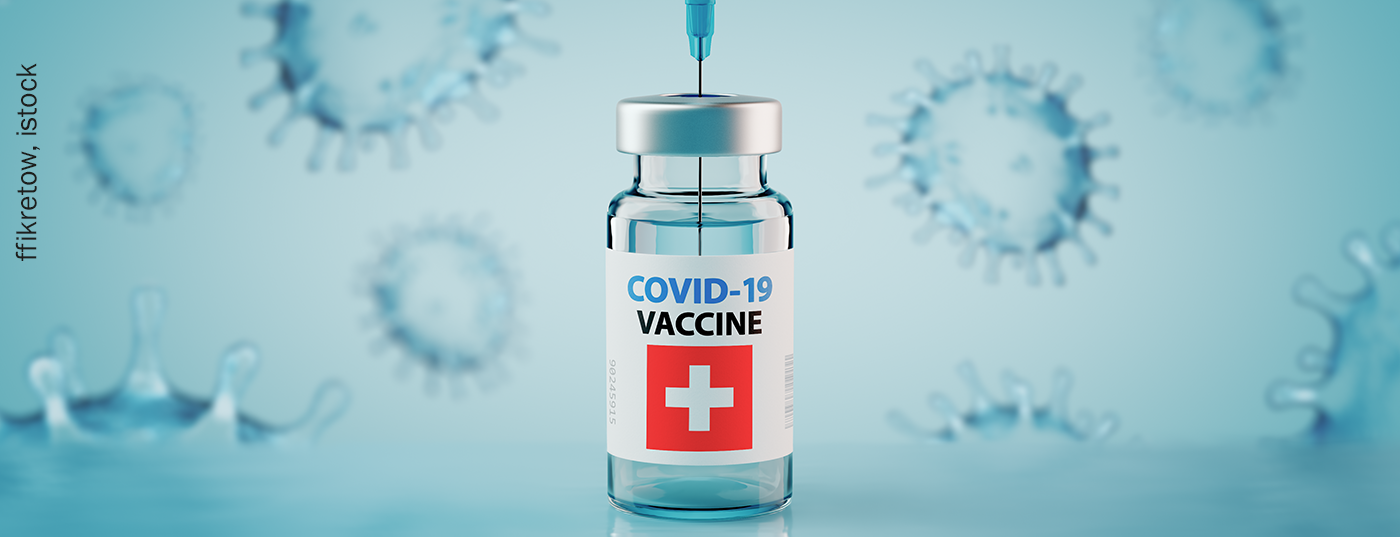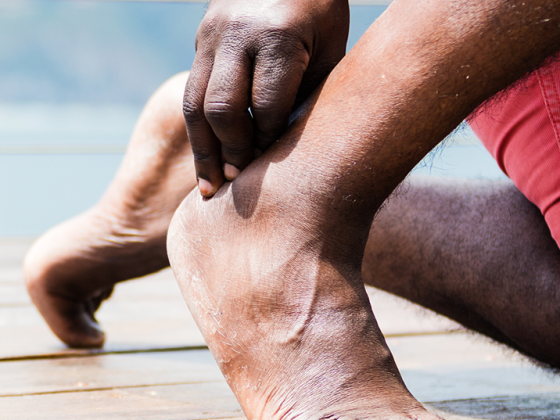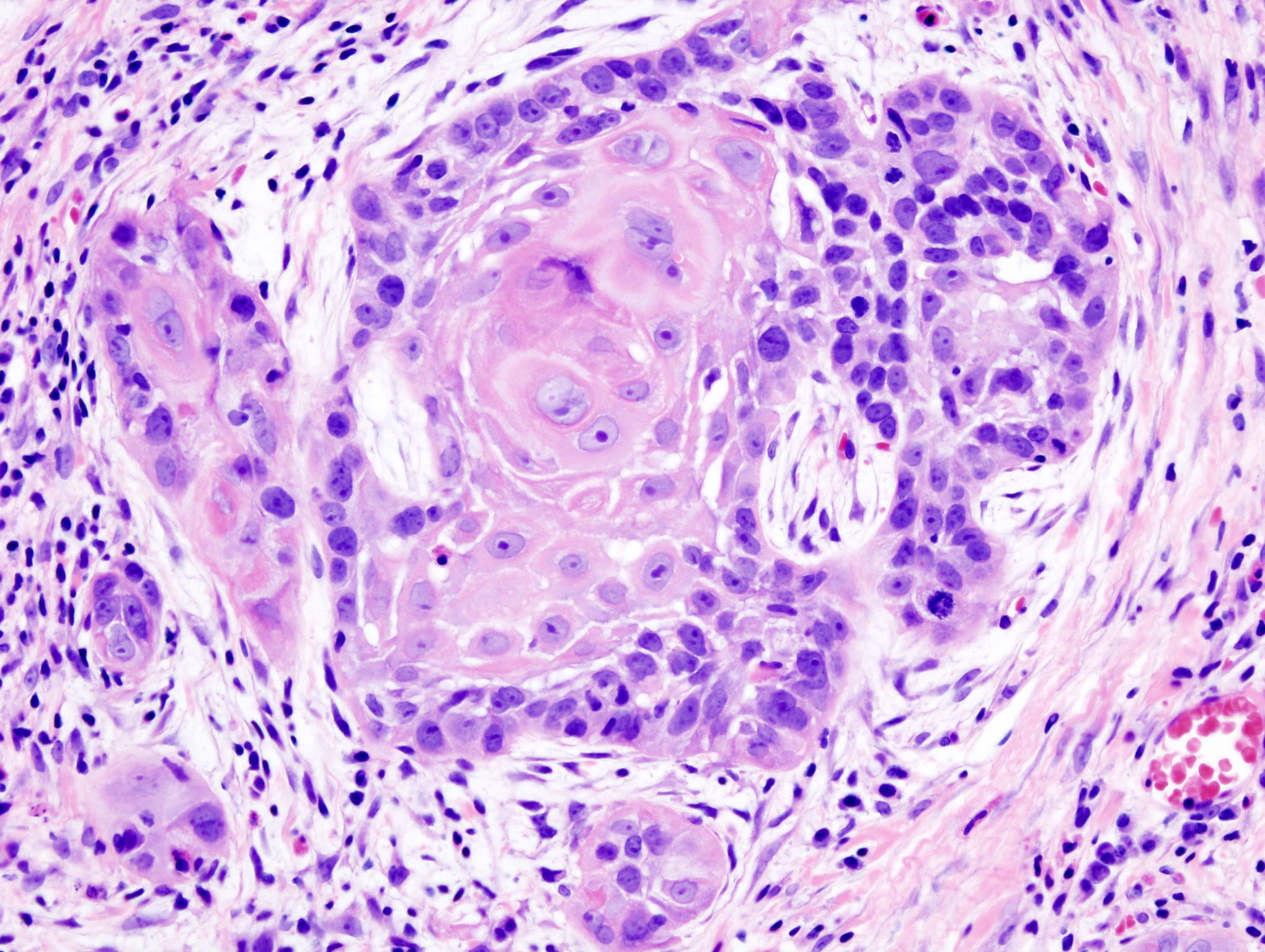Based on current data, EKIF and BAG conclude the following: vaccination is recommended for all adolescents aged 12-15 years to protect against common mild and very rare severe covid-19 disease. The Moderna vaccine, which has recently been approved for this age group, shows comparable efficacy and tolerability to the Pfizer/BioNTech vaccine.
In the current epidemiologic setting, the risk of exposure and associated burden of disease from Covid-19 is elevated for the 12-15 year age group, according to the Swiss National Covid-19 Task Force [1]. Vaccination can avoid negative social and psychological effects of measures such as isolation and quarantine, as well as the consequences of frequent exposure, according to the assessment of EKIF and BAG. Although Covid-19 usually has a mild course in adolescents, some experience prolonged illness, which is also described as PASC in adolescents (“post acute sequelae” of SARS-CoV-2 infection) [2,3].
Spikevax®: efficacy and safety
The mRNA-1273 vaccine, which had received Swissmedic approval in January 2021 for persons over 18 years of age (COVID-19-Vaccine Moderna®), has been available since 09/08/21 for persons 12 years of age and older under the new name Spikevax® [1]. The dosage and vaccination schedule of Spikevax® with 2 vaccine doses at 4-week intervals for adolescents are identical to those for adults. This means that, in addition to Comirnaty® (Pfizer/BioNTech), another vaccine for this age group is now available in Switzerland. The efficacy and tolerability profile is comparable to that in young adults as well as adolescents vaccinated with Comirnaty®.
|
Corona pandemic and mentalhealth The incidence of mental illness internationally has increased markedly among adolescents and young adults since the corona pandemic. A Swiss study examined the mental health effects of the first lockdown in 1146 adolescents aged 12-17 years. One third of the subjects showed symptoms consistent with depression ADHD and ODD (“oppositional defiant disorder”). Problematic intensity of Internet use were other findings of the study [6]. The meta-analysis “Global Prevalence of Depressive and Anxiety Symptoms in Children and Adolescents During COVID-19” summarizes international findings [7]. |
The efficacy study of Spikevax® against SARS-CoV-2 variants circulating in 2020 included a total of 3236 study participants aged 12 to 17 years with no evidence of prior SARS-CoV-2 infection. Of these, 2163 received Spikevax® and 1073 received placebo. From day 14 after administration of the second dose, a total of 4 confirmed symptomatic infections occurred, all in the placebo group. This corresponds to a 100% efficacy (95% CI 28.9-NE) of Spikevax® against symptomatic covid-19 disease [4]. Using the CDC case definition, a total of 8 confirmed symptomatic infections were observed starting 14 days after after administration of the second dose, 7 of which occurred in the placebo group. This corresponds to an efficacy of 93.3% (95% CI 49.9-99.9) [4]. Immunogenicity studies have shown that vaccination with Spikevax® also induces high neutralizing antibody titers in the 12-17 year age group. At 28 days after the second dose, vaccination induced “Geometric least squares mean titers (GLSM)” of 1401.1 in participants aged 12-17 years, which showed non-inferiority to the GLSM of participants aged 18-25 years (1301.3) [4].
Current data regarding the delta variant indicate a smaller reduction in viral transmission compared to the alpha variant, but vaccinated individuals are significantly less likely to be infected with delta compared to unvaccinated individuals, and vaccination appears to shorten the infectious phase in delta-infected individuals [1].
|
Spikevax®: tolerability profile similar to over 18s According to safety data collected in the pivotal study of Spikevax® in 12-17 year old adolescents, local adverse inoculation events (UIE) did not differ significantly after dose 1 and dose 2. The most common local UIE was pain at the injection site (93% after 1st dose/92% after 2nd dose). Axillary tenderness (23/21), swelling (16/21), and redness (13/20) are other local observations [4]. In general, after the 2nd dose, systemic UIE was observed more frequently. The most common systemic UIE were fatigue (48% after 1st dose/68% after 2nd dose) and headache (45/70). Other systemic UIE were myalgias (27/47), chills (18/43), nausea and vomiting (11% / 24%), and fever (3/12). Fatigue and headache were also the most common systemic UIE among 18-25 year olds vaccinated. No difference in reactogenicity between the two vaccines in the 12-15/17 year age group is evident in the pivotal studies [4,5]. To detect serious adverse events, participants were observed for at least 28 days after dose 2 (median duration 53 days). During this period, serious UIE were reported in 2 subjects (<0.1%) who received Spikevax® and in 1 subject (<0.1%) who was in the placebo group. |
Data on the safety and tolerability of Spikevax® are based on 3726 participants aged 12 to 17 years who had no known SARS-CoV-2 infection [4]. Of these, 2486 received at least 1 dose of Spikevax® and 1240 received at least 1 dose of placebo; the median observation period after dose 2 was 53 days. Participants were followed up for a maximum of 6 months. Adverse inoculation events (UIE) were recorded with an electronic study diary over a period of 7 days each after doses 1 and 2. Compared with placebo, more local and systemic UIE were observed in those vaccinated with Spikevax®, with UIE generally mild to moderate and lasting an average of 3-4 days (Box) . Outcomes in this age group were comparable to the 18-25 year age group in terms of observed events.
Literature:
- Swiss National Covid-19 Science Taskforce, 8/26/21, https://sciencetaskforce.ch (last accessed 09/05/21).
- Say D, et al: Child & adolescent health 2021; 5(6): e22-e23.
- Molteni E, et al: The Lancet. Child & adolescent health 2021, 10.1016/S2352-4642(21)00198-X.
- Ali K, et al: New England Journal of Medicine 2021, 10.1056/NEJMoa2109522.
- Frenck RW, et al: The New England journal of medicine 2021, 10.1056/NEJMoa2107456.
- Mohler-Kuo M, et al: International Journal of Environmental Research and Public Health. April 27, 2021.
- Racine N, et al: A meta-analysis. JAMA Pediatr. Published online August 9, 2021
HAUSARZT PRAXIS 2021; 16(9): 16 (published 9/19-21, ahead of print).












